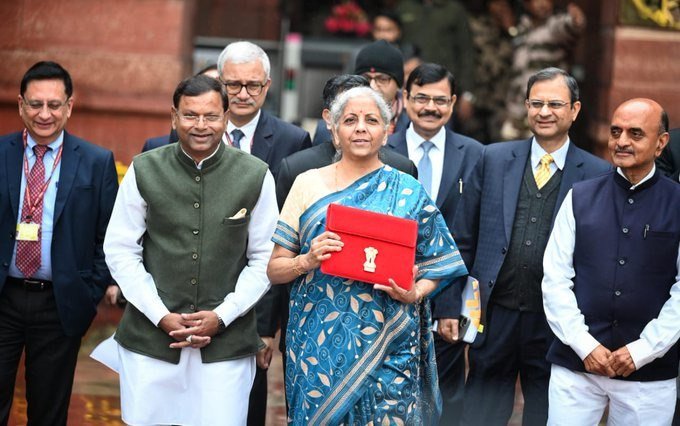Finance Minister unveils 2024-25 Interim Union Budget, prioritizing capital expenditure and economic growth
Author: BI Bureau

New Delhi: Finance Minister Nirmala Sitharaman unveiled the Interim Union Budget for 2024-2025 in Parliament, announcing an 11.1% increase in the capital expenditure outlay to Rs 11,11,111 crore, constituting 3.4% of the GDP. This move follows a significant tripling of the capital expenditure outlay in the last 4 years, contributing to substantial economic growth and employment creation.
The First Advance Estimates for the National Income of FY 2023-24 project India's Real GDP growth at 7.3%, aligning with the RBI's upward revision from 6.5% to 7% in its December 2023 Monetary Policy Committee meeting. Despite global economic challenges, India's resilience is evident, with the IMF revising its growth projection for FY2023-24 upwards to 6.3%.
The IMF anticipates India becoming the third-largest economy by 2027, contributing significantly to global growth. Various international agencies, including the World Bank, IMF, OECD, and ADB, project India's growth between 6.1% and 6.7% in 2024-25.
Sitharaman highlighted the buoyancy in revenue collections, noting that GST collections reached ₹1.65 lakh crore in December 2023, marking the seventh time gross GST revenues crossed ₹1.6 lakh crore.
For 2024-25, the estimated total receipts, excluding borrowings, and total expenditure stand at Rs 30.80 lakh crore and 47.66 lakh crore, respectively. Tax receipts are projected at Rs 26.02 lakh crore. The Finance Minister announced the continuation of the fifty-year interest-free loan scheme for capital expenditure to states with a total outlay of Rs 1.3 lakh crore.
Fiscal consolidation aims to reduce the fiscal deficit below 4.5% by 2025-26, with the estimated fiscal deficit in 2024-25 at 5.1% of GDP. Gross and net market borrowings through dated securities for 2024-25 are estimated at Rs 14.13 and 11.75 lakh crore, respectively, both less than in 2023-24.
Highlighting positive economic indicators, Sitharaman shared that the Revised Estimate of total receipts (excluding borrowings) is Rs 27.56 lakh crore, with tax receipts at Rs 23.24 lakh crore. The Revised Estimate of total expenditure is Rs 44.90 lakh crore, with revenue receipts at Rs 30.03 lakh crore, reflecting strong growth momentum and formalization in the economy.
The Finance Minister announced a golden era for tech-savvy youth, establishing a corpus of Rs one lakh crore with a fifty-year interest-free loan to encourage research and innovation. Initiatives for railways include implementing economic railway corridor programs and converting forty thousand rail bogies to Vande Bharat standards for enhanced safety and comfort.
The Interim Budget also emphasizes the government's commitment to making the eastern region a powerful driver of India's growth. PM Awas Yojana (Grameen) aims to achieve the target of three crore houses, and rooftop solarization will enable one crore households to obtain up to 300 units of free electricity monthly.
Other notable announcements include the Pradhan Mantri Kisan Sampada Yojana benefiting 38 lakh farmers, the Pradhan Mantri Formalisation of Micro Food Processing Enterprises Yojana assisting 2.4 lakh SHGs and sixty thousand individuals with credit linkages.
In the Part-B summary, no changes in taxation were proposed, retaining the same rates for direct and indirect taxes. Tax benefits for Start-Ups and certain investments were extended by one year up to March 31, 2025.
Sitharaman acknowledged the support of taxpayers, with direct tax collections more than tripling in the last decade. The focus on improving taxpayer services led to simplified tax returns, a reduction in processing time, and faster refunds.
On indirect taxes, Sitharaman highlighted the positive impact of GST, reducing the compliance burden on trade and industry. The tax base of GST doubled, with average monthly gross GST collections nearly doubling to Rs 1.66 lakh crore. States benefited as well, with SGST revenue achieving a buoyancy of 1.22 in the post-GST period.
Sitharaman announced the government's intention to release a white paper on the status of the Indian economy, providing insights into the period till 2014 and lessons learned from past mismanagement.



